Hello everyone, my name is Andrew Bibee, I am a Japanese American photographer currently based in Tokyo. I originally came here for college and have remained here ever since working freelance. I have been an ardent fan of 35mmc and it is a pleasure to be here within the community. This, my first article here is about a Nikon S3 Olympic; a piece of treasure found in a junk section.
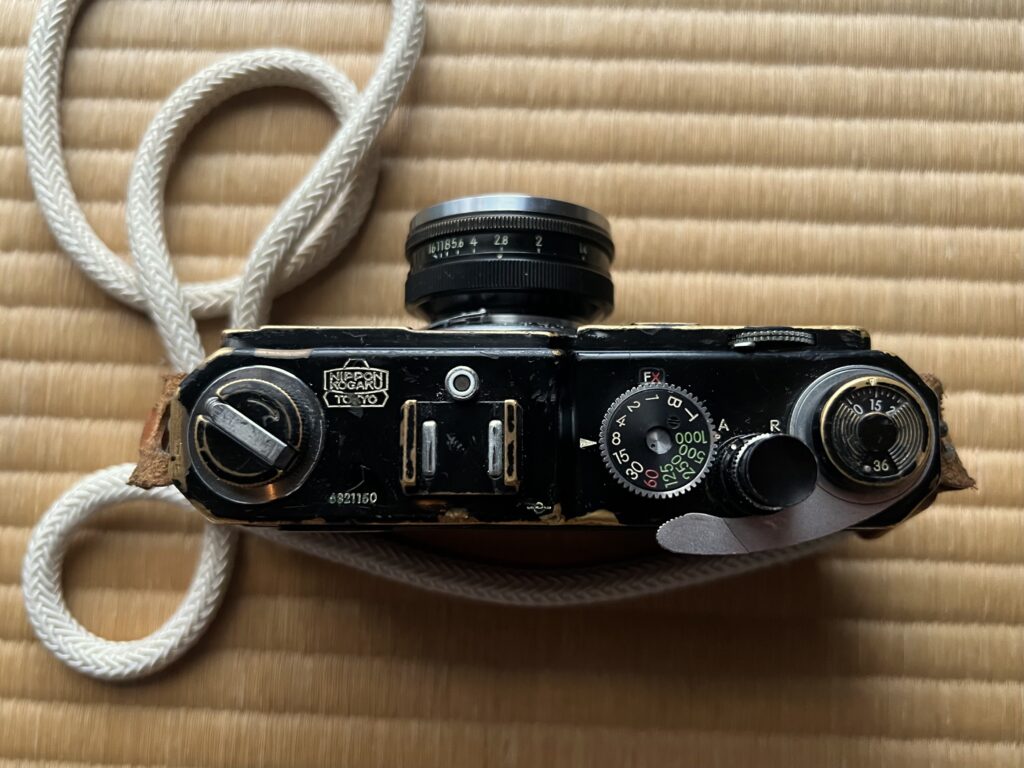
“One man’s trash is another man’s treasure,” is a very self-explanatory saying which describes how a worth of an object would change accordingly depending on who sees it. A beat up muscle car found in a remote barn in the US would be considered an amazing find to an automobile fan, or a rusted hunk of metal junk to a random passerby. An old broken wristwatch can be a treasured sentimental heirloom to one, or a faulty tool that needs replacing to another. An old camera in an antiquated format would seem pointless to have to some, but to me, it could be the dream camera I’ve sought for years.
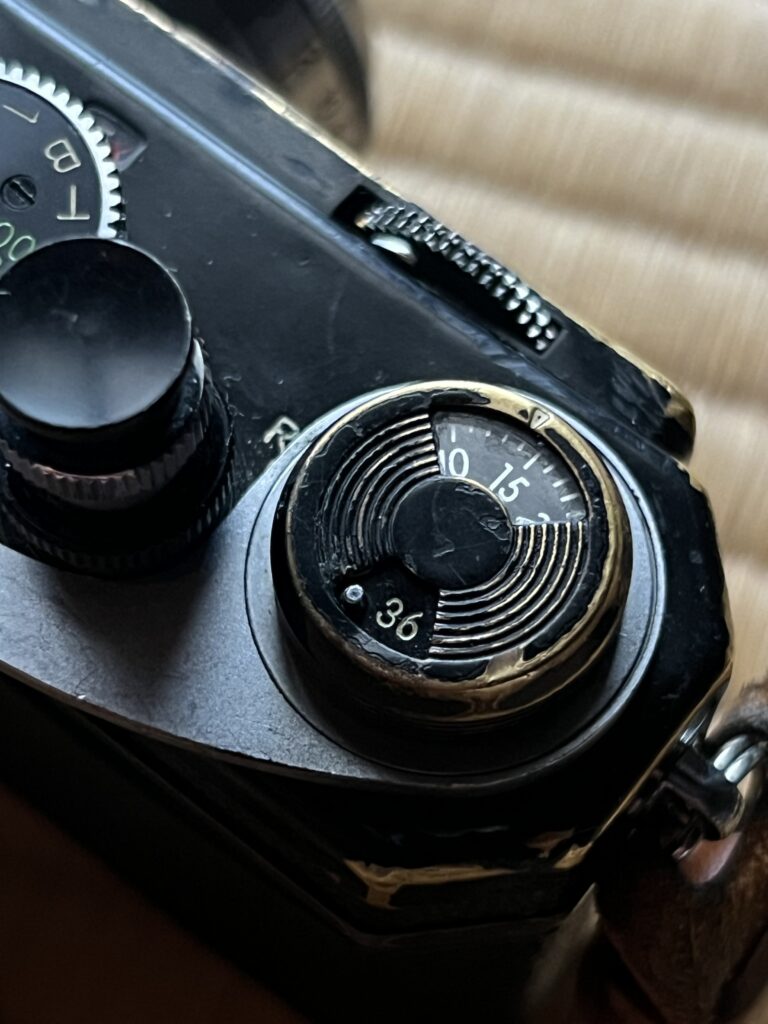
I found that very camera in a junk section; an old beaten up Nikon S3 Olympic that looked like it was shot at in Vietnam. The Mt. Fuji shaped Nippon Kogaku logo was chipped, the rangefinder faint, and dents and scratches covered the entirety of the body (even on the insides)! The deep luster of the black paint and the wabi-sabi of exposed brass made my heart skip a beat. Yet, I was hesitant, it was in the junk section after all, and the staff didn’t check it’s shutters. I dragged a friend of mine over who was an expert in Nikon rangefinders to check it for me, and as soon as I received an all clear from him, I bought the camera for about 80,000 yen.
I was already familiar with Nikon’s rangefinder cameras by this time; prior to purchasing the Nikon S3 Olympic, I got my grubby hands on an overhauled chrome Nikon S3 and 50mm Nikkor-S f1.4 lens at the Ginza camera fair. The Nikon S3 was excellently engineered, easy to use, and the viewfinder was more comfortable for me to use compared to those of Leica M cameras (sacrilege I know). I adore that camera, but my eyes always wandered over to the old Asahi Camera magazines showcasing black-paint SPs and S3s. So you could imagine the sheer joy that overcame me as soon as I got a black paint Nikon S camera of my own.
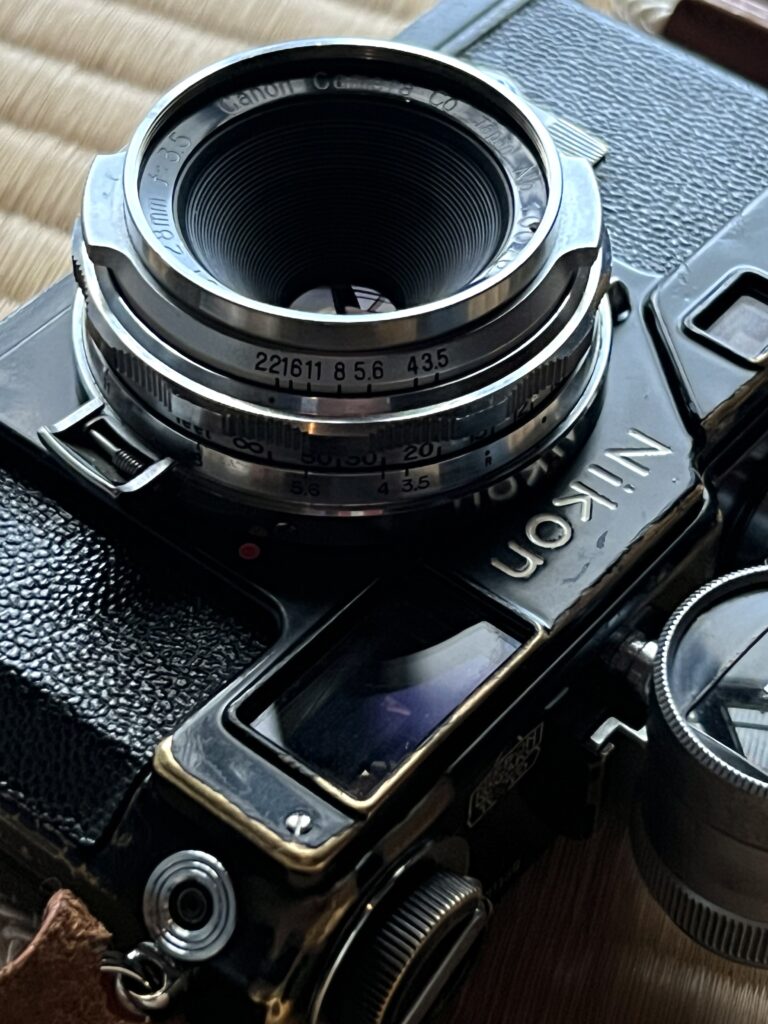
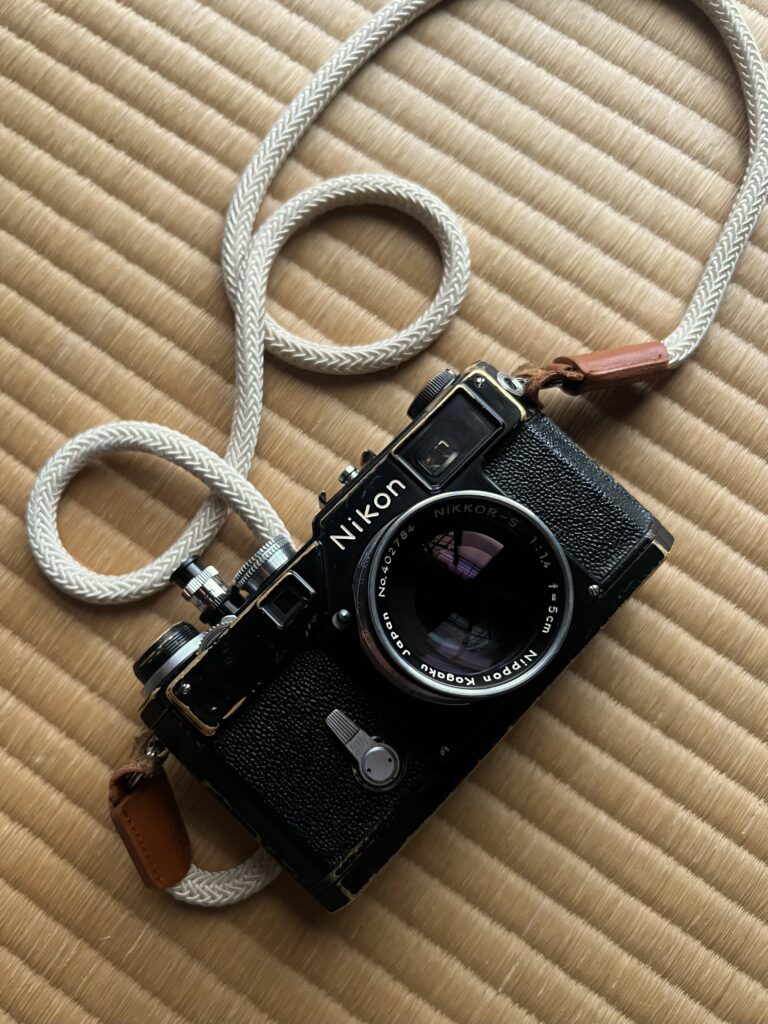
First introduced in 1958, the Nikon S3 was meant as a more economical option to the Nikon SP, and the official replacement of the popular Nikon S2. Unlike the Nikon SP which boasted an advanced moving viewfinder with projected frame lines, the S3 had traditional etched frame lines for 35, 50, and 105mms with zero parallax correction. Both cameras were reasonably well liked, but their production was cut short as Nikon’s first SLR, the Nikon F, made its successful debut in 1959. According to various sources, about 12,300 Nikon S3s were made when production ceased in 1961.
Miraculously, the story of the S3/SP does not end here. Just prior to the 1964 Tokyo Olympics, photojournalists from various newspaper companies pleaded for more SPs and Nikon acquiesced. New SPs came down the assembly line with a redesigned 50mm f1.4 lens (popularly called the “Olympic Nikkor”), and when the Tokyo Olympics came to a close, Nikon made a final batch of 2000 black paint S3s that came with the unique 50mm lens in 1965. These black S3s with their Olympic Nikkors became known as the Nikon S3 Olympic, and it is one of these cameras that I have purchased in the junk section in Shinjuku.
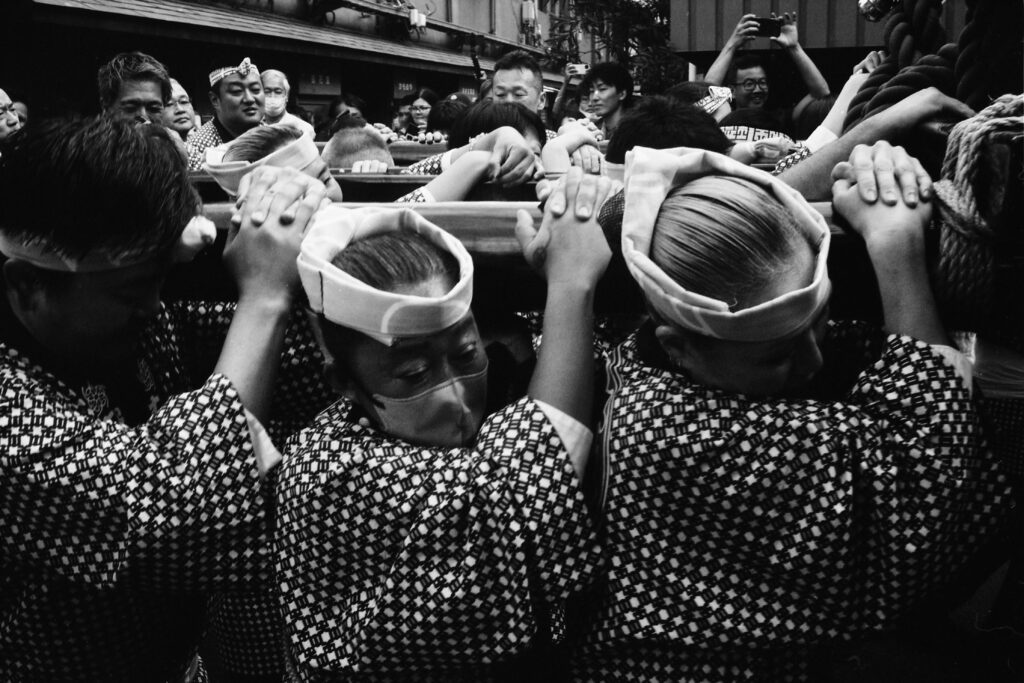
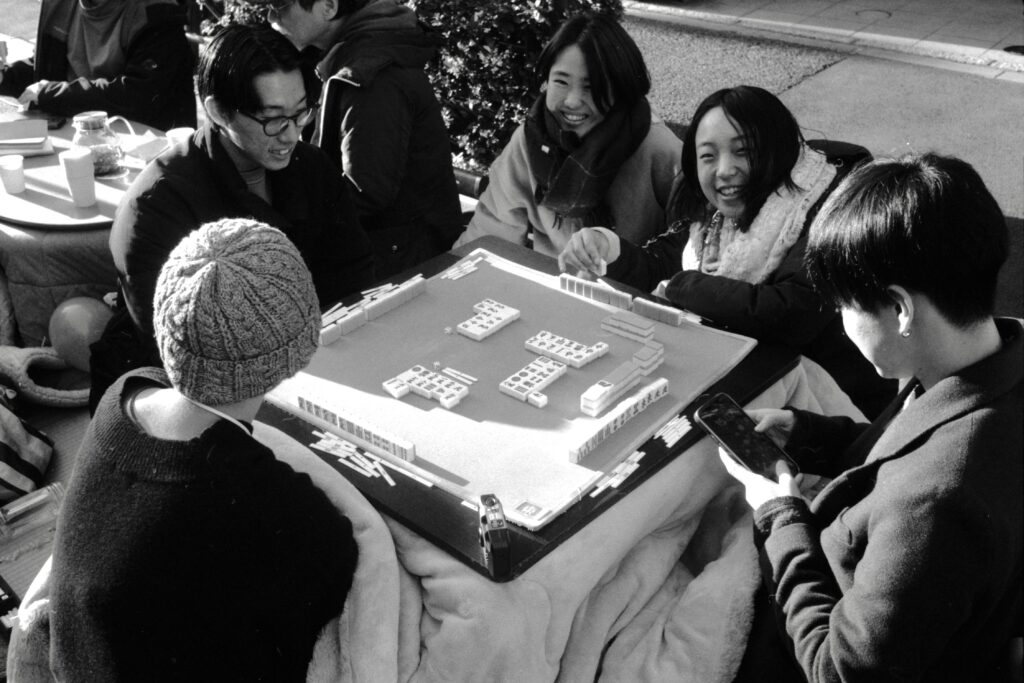
Shot on Nikon S3 Olympic with 35mm W-Nikkor f/3.5 lens, on Kentmere 400
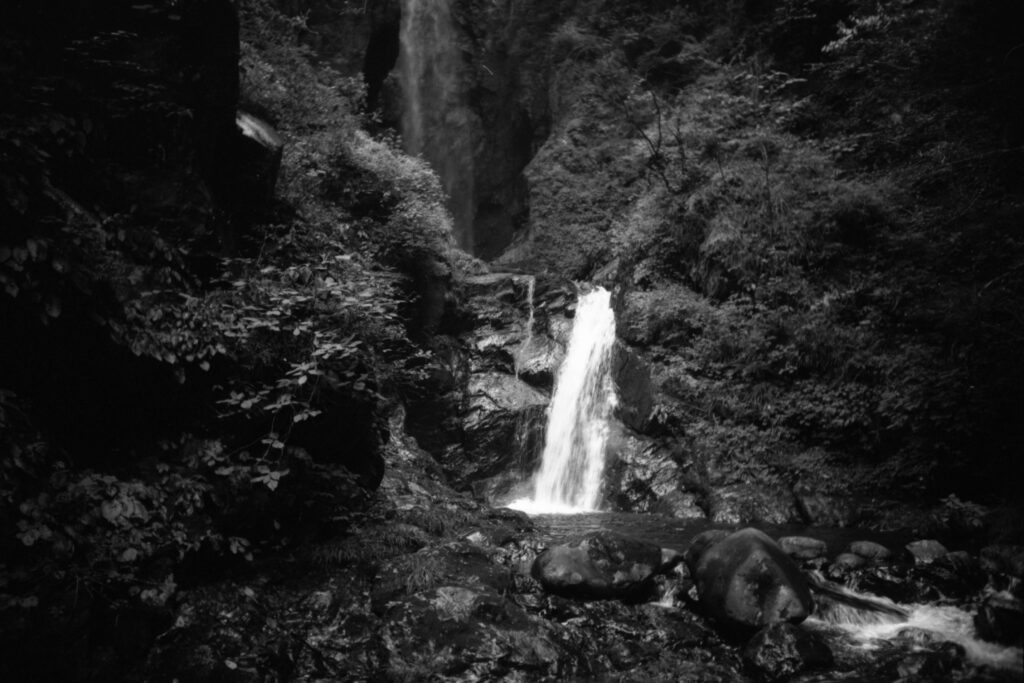
Shot on Nikon S3 Olympic with the 28mm Canon f/3.5 Contax Rangefinder mount, on Kentmere 100
The Nikon S3 and her siblings occupy a unique space in the rangefinder world. The Nikon S line of cameras are not as coveted as Leica M cameras or as advanced as the later Contax G cameras, yet they offer a wholly unique experience entirely its own. A prominent feature of the S3/SPs would be its focusing system in which a gear on the top righthand side on the front must be unlocked/turned for focusing. Many find this lock finicky at first, but with practice, the focusing becomes fast and intuitive, allowing the user to get a crisp focus instantaneously. This focusing system also makes Nikon S cameras one of the few manual focusing cameras that can be used single handedly, which is especially useful on rainy days as I can hold my camera in my right hand and my umbrella in my left. The camera natively accepts Nikon made S mount lenses, but it can also utilize a minor selection of the older Contax bayonet mount lenses up to the 50mm, and third party S mount lenses made by Voigtlander.
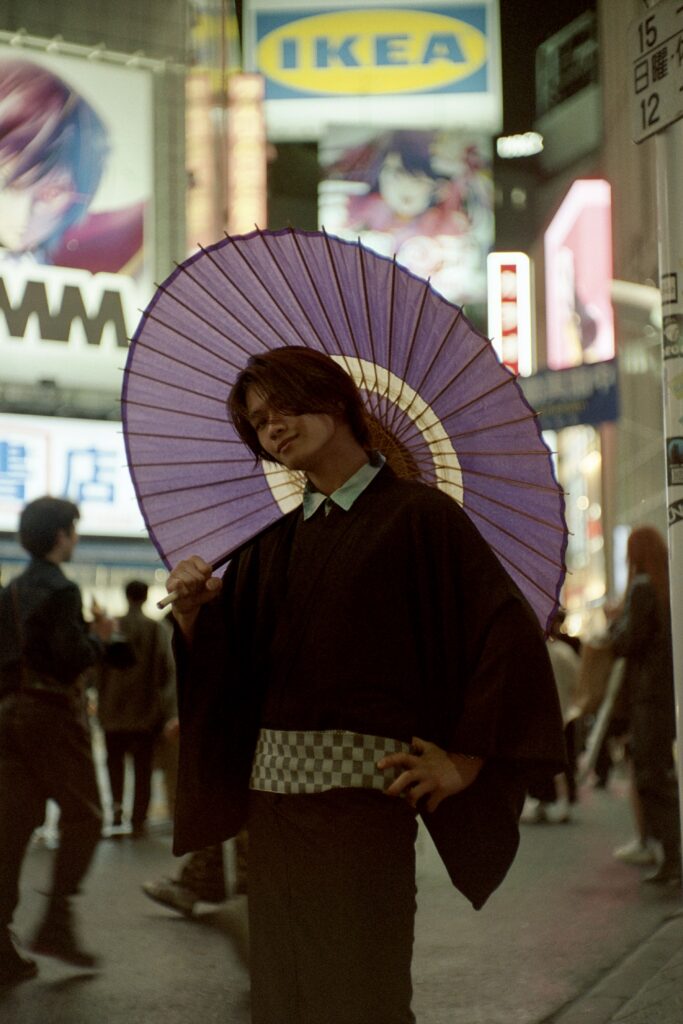
Shot on Nikon S3 Olympic with the 50mm Nikkor-S f/1.4 lens, on Lomography 800
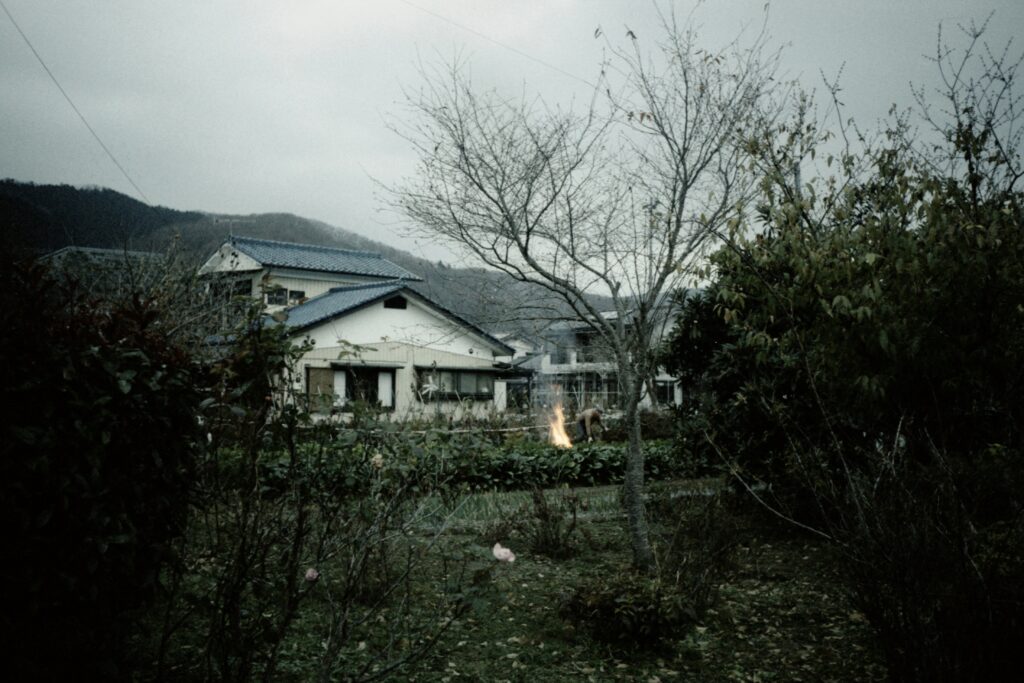
Nikon S3 Olympic with 35mm W-Nikkor f/3.5 lens, on Lomography Lomochrome Metropolis @400 asa
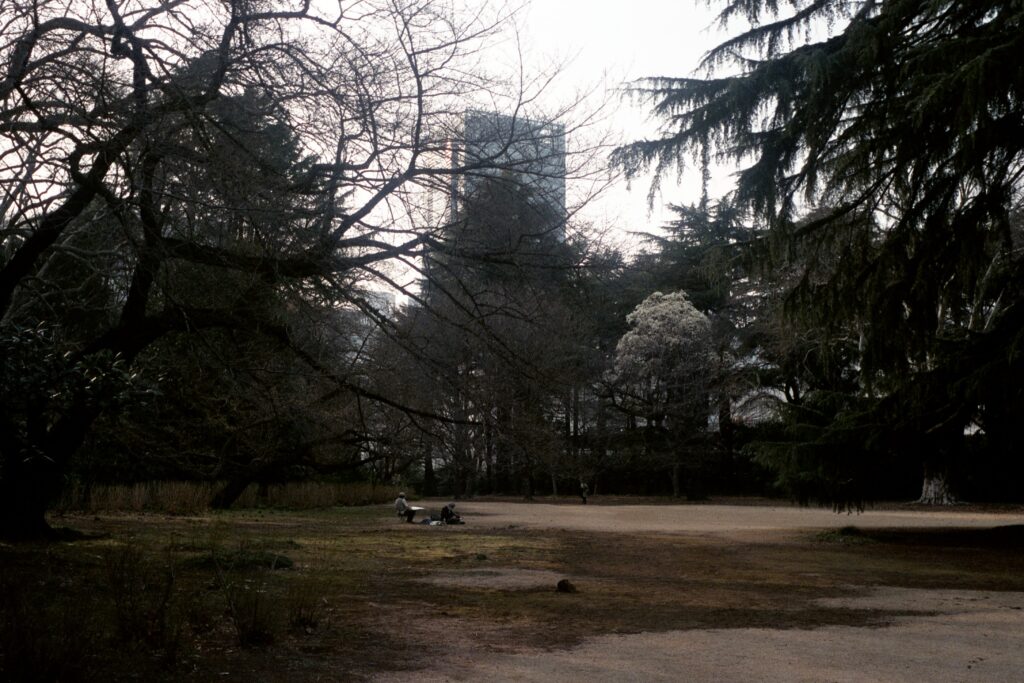
Nikon S3 Olympic, with 35mm W-Nikkor f/3.5 lens, on Fujifilm Superia Xtra 400
For all it’s attributes and quirkiness, I’am glad I have a piece of Nikon camera history in my hands. I wish this Nikon S3 Olympic could talk, as each and every one of its scratches and dents could tell a fascinating story, it very well could have been a photojournalist’s tool. Maybe it was used in the muddy terrain of the Vietnam War, or maybe smacked with a 2×4 by an angry student protester from the Tokyo university protests and Anpo Riots.
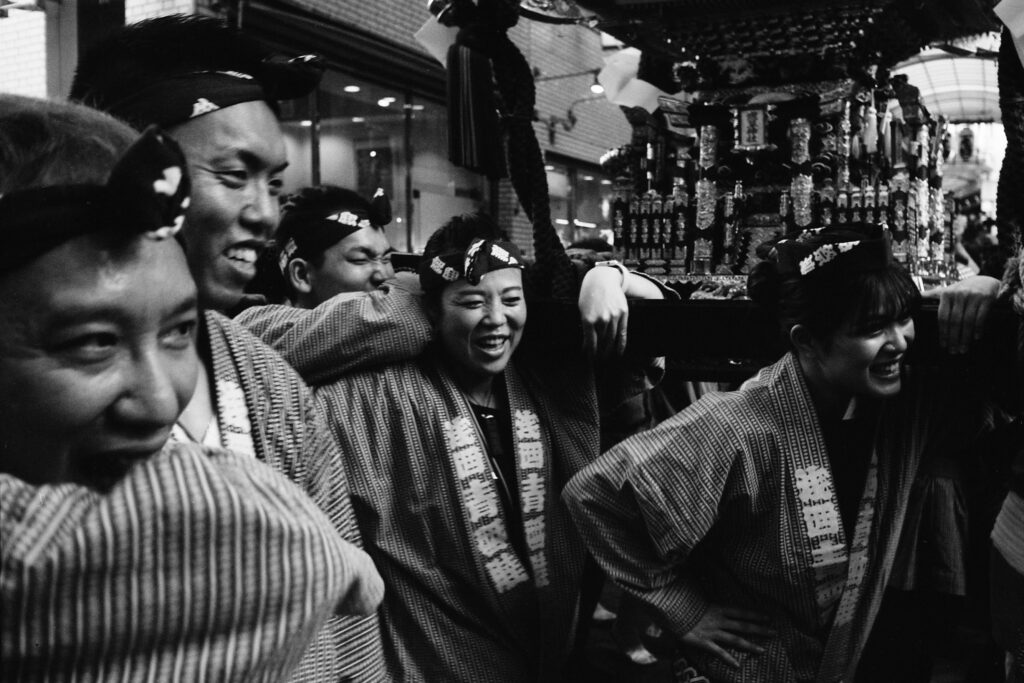
Nikon S3 Olympic with the 35mm W-Nikkor f/3.5 lens /Ilford XP2 Super 400
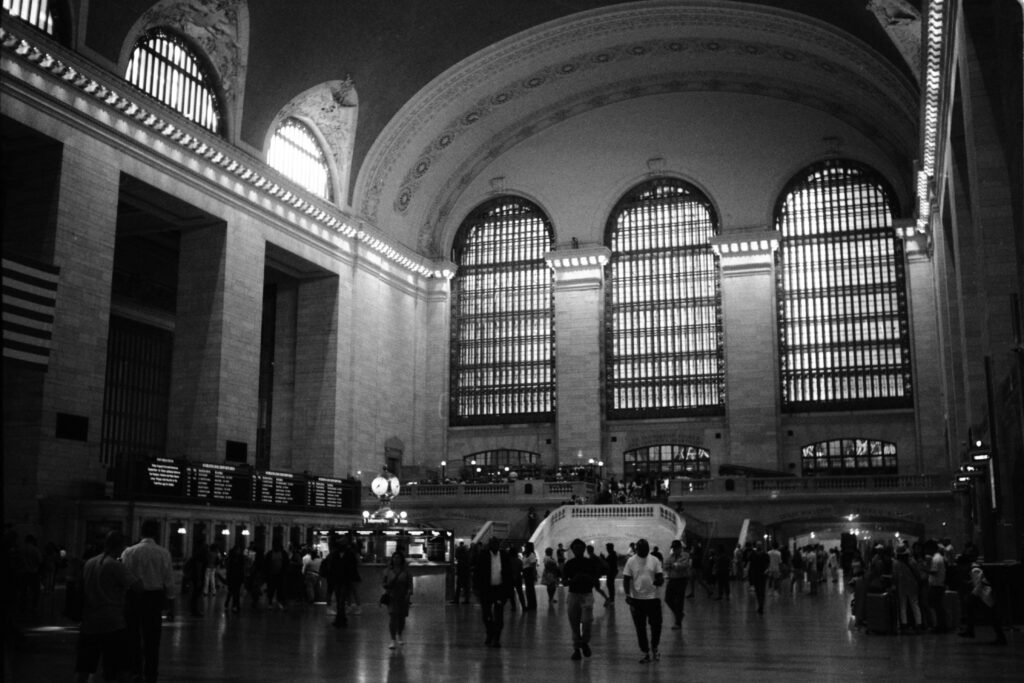
Nikon S3 Olympic with the 35mm W-Nikkor f/3.5 lens, on Agfa APX 400
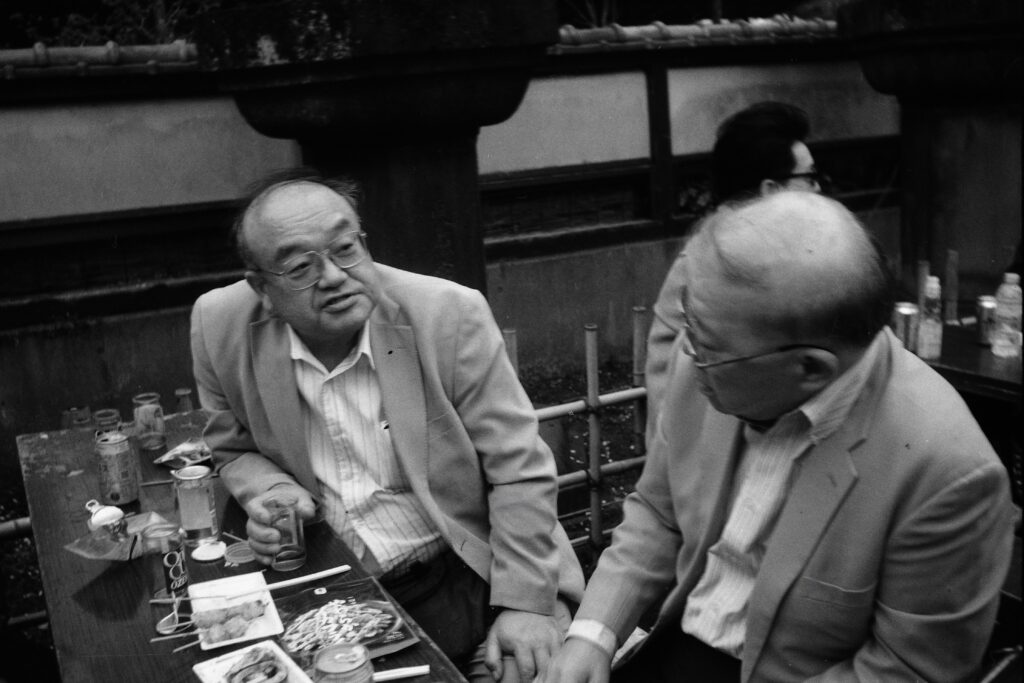
Nikon S3 Olympic, with the 35mm W-Nikkor f/3.5 lens, shot on Fomapan 400
The stories of this camera may be lost to oblivion, but I am certain of one thing: this camera will have another lifetime’s worth of stories and photos to share in due time. Hopefully, after my time has passed, this Nikon S3 Olympic would end up behind another display case, eagerly awaiting the next photographer to pick her up. I hope you enjoyed my first story and the images of the camera and photos I have taken on it.
Share this post:

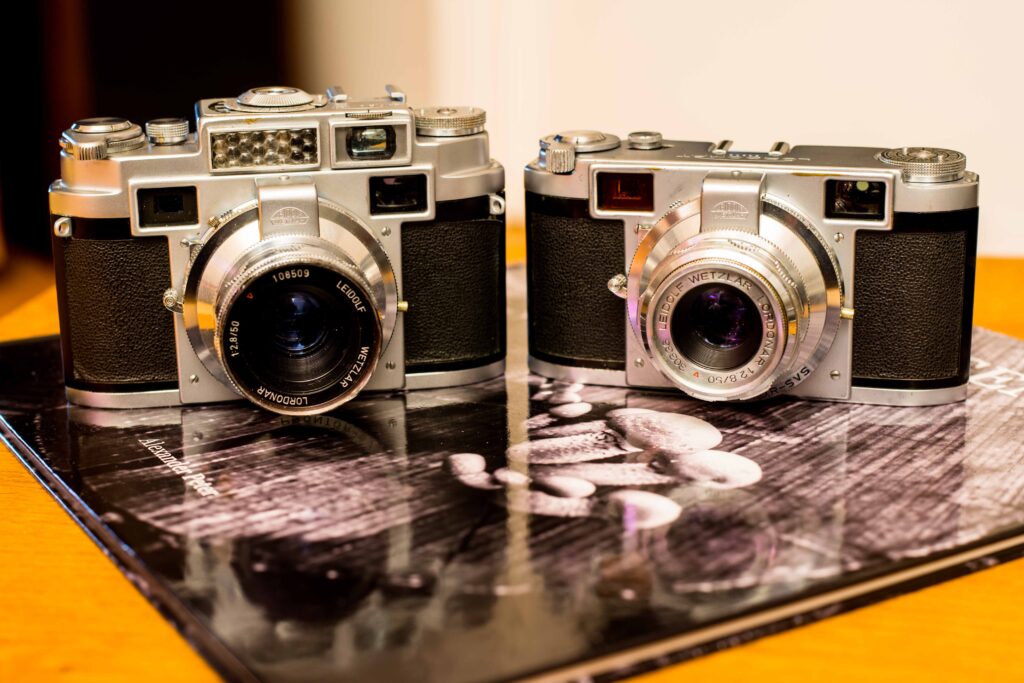

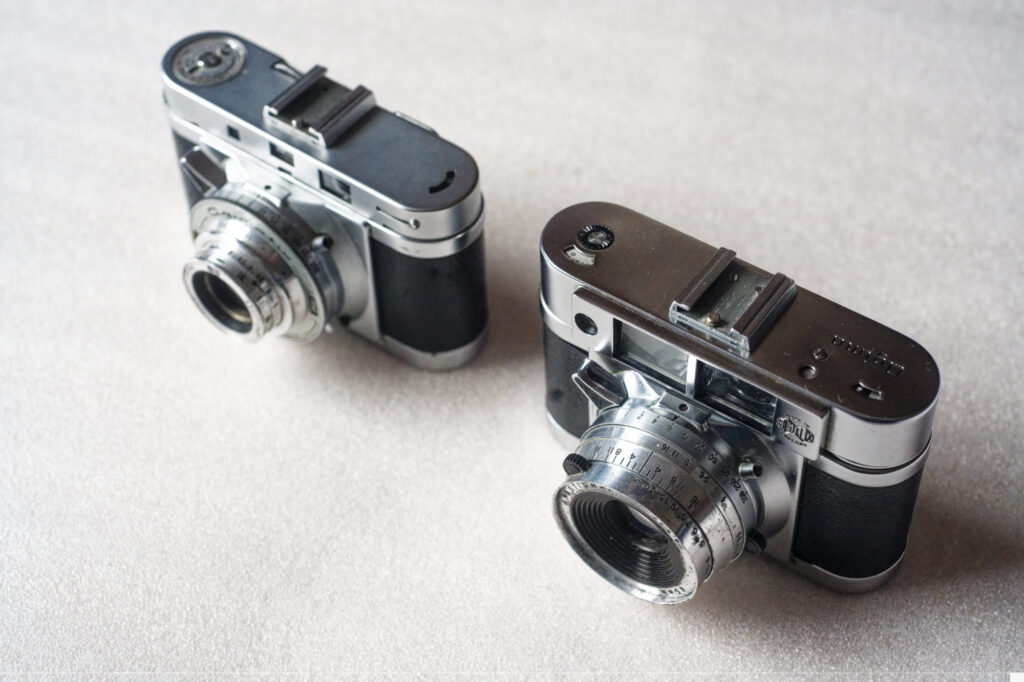
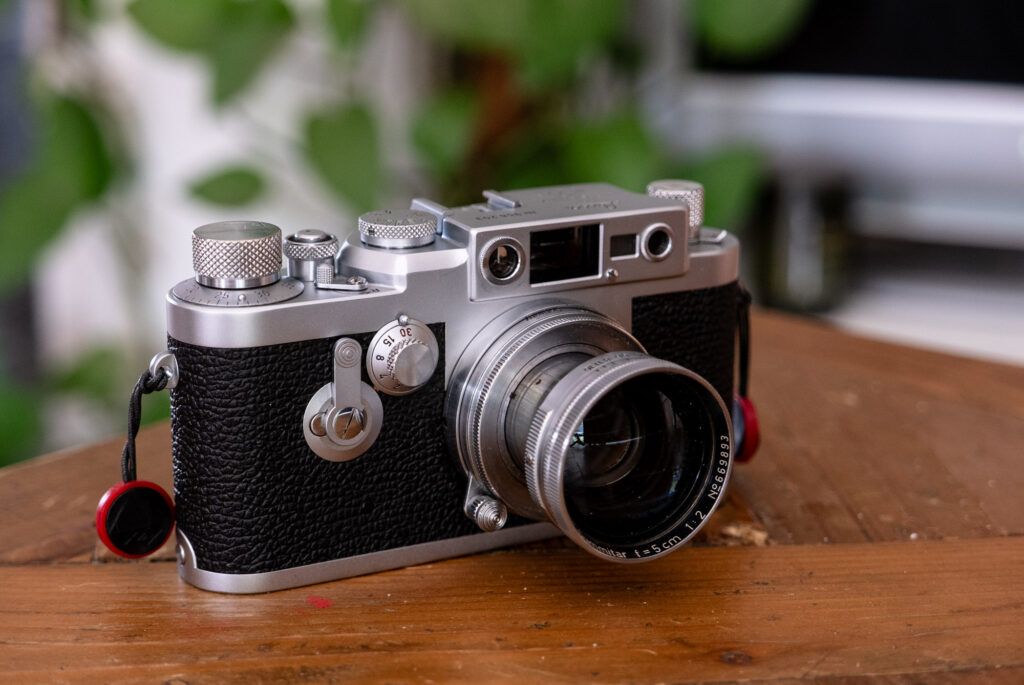




Comments
John Fontana on Nikon S3 Olympic – A Piece of Treasure Found in the Junk Section
Comment posted: 27/05/2024
Comment posted: 27/05/2024
Comment posted: 27/05/2024
mike on Nikon S3 Olympic – A Piece of Treasure Found in the Junk Section
Comment posted: 27/05/2024
Comment posted: 27/05/2024
Callum Stanton on Nikon S3 Olympic – A Piece of Treasure Found in the Junk Section
Comment posted: 27/05/2024
Comment posted: 27/05/2024
Bill Brown on Nikon S3 Olympic – A Piece of Treasure Found in the Junk Section
Comment posted: 27/05/2024
Comment posted: 27/05/2024
Gary Smith on Nikon S3 Olympic – A Piece of Treasure Found in the Junk Section
Comment posted: 27/05/2024
Comment posted: 27/05/2024
Curtis Heikkinen on Nikon S3 Olympic – A Piece of Treasure Found in the Junk Section
Comment posted: 27/05/2024
Comment posted: 27/05/2024
Peter Roberts on Nikon S3 Olympic – A Piece of Treasure Found in the Junk Section
Comment posted: 27/05/2024
As you say, what stories that camera could tell.
Thanks for posting, Andrew, and welcome to 35mmc. I look forward to more from you.
Comment posted: 27/05/2024
Stefan Wilde on Nikon S3 Olympic – A Piece of Treasure Found in the Junk Section
Comment posted: 27/05/2024
I thought I was over GAS but along comes your lovely post... I have a 1936 Contax II yet I never figured out why there was this focusing wheel on the top plate. Your explanation makes perfect sense - it's for shots also holding an umbrella! I like to think of the Nikon S3 et al. as Contax es, only way better. But I must not go down another rabbit-hole and get one... I love the shot of the business buddies! Didn't they mind having their picture taken? However, great shots, nice camera, very nice write up - please keep the posts coming!
Comment posted: 27/05/2024
Stefan Wilde on Nikon S3 Olympic – A Piece of Treasure Found in the Junk Section
Comment posted: 28/05/2024
thanks for your nice reply. As for GAS I would say if you're collecting, definitly get a Contax II. They are the thing the Nikons evolved from, so if you want the whole story, get one. Problem is that except a couple of nerds like me no one will be interested in hearing the story of that evolution... If you're primarily a shooter, I'd not get a Contax as the Nikons have ironed out most of the Contax's issues and will probably give you a nicer experience and less expensive maintenance. I'm afraid, I am a bit of a collector, but I really can't in good faith recommend collecting
Comment posted: 28/05/2024
Dave G. on Nikon S3 Olympic – A Piece of Treasure Found in the Junk Section
Comment posted: 28/05/2024
James on Nikon S3 Olympic – A Piece of Treasure Found in the Junk Section
Comment posted: 28/05/2024
Comment posted: 28/05/2024
Scott Gitlin on Nikon S3 Olympic – A Piece of Treasure Found in the Junk Section
Comment posted: 12/06/2024
CK Komek on Nikon S3 Olympic – A Piece of Treasure Found in the Junk Section
Comment posted: 29/08/2025
I did not know that Canon made lenses with the S mount.